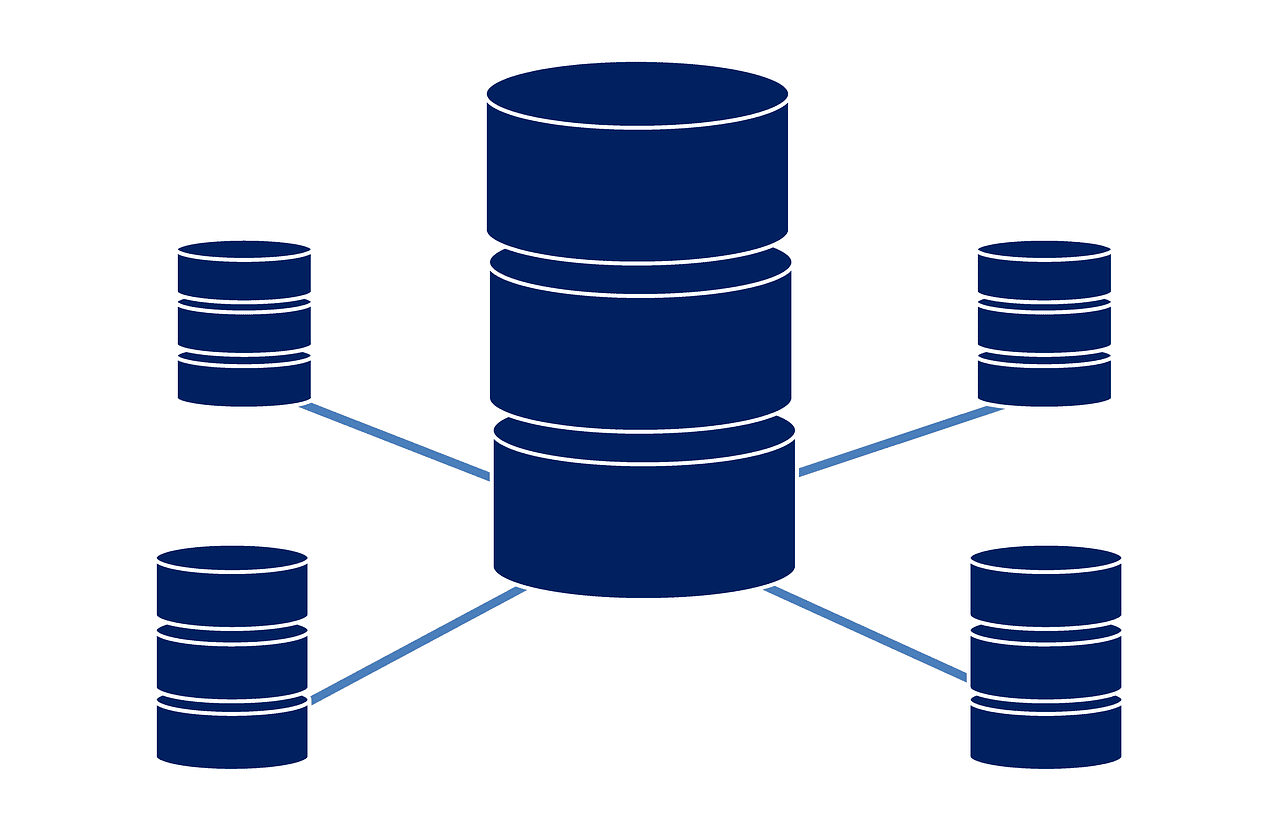Commonly used terms in the world of digital marketing and information technology, both terms incur that data is an essential and flexible asset that needs to be stored and analyzed for business tactics and idea generation.
These are the modern methods implied by organizations and foundations for ease of data interpretation and accessibility. Not only the whole process requires precision, but also technical knowledge and requisite software.
Key Takeaways
- Data mining involves extracting valuable information and patterns from large datasets.
- Data warehousing consolidates data from different sources into a central repository for analysis.
- Both processes support data-driven decision-making but serve different purposes in data management.
Data Mining vs Data Warehousing
The difference between data mining and data warehousing is that data mining is a process for analyzing and extracting data, whereas, data warehousing refers to the process of sequentially storing data after extracting it from sources.

Data mining isn’t a new concept invented or practised in the cyber age, but it was followed back in the 1930s to segregate useful and non-useful data and files for ease of accessibility and application.
Data mining means finding cohesion and relatable data trails from the bulk to analyze the feedback and requirements of the customer in the field of business.
Data mining is an important step in MNCs and organizations during risk management, crisis communication, corporate analysis, fraud assessment, and safety measures.
When we say ‘data warehousing’, we naturally get an idea of a warehouse where data is being stored and stacked up sequentially so that one can easily pick up any piece of data according to the requirement.
Data warehousing is the same thing, and it is as simple as the name suggests. A data warehouse extracts information from several sources while assuring data quality, consistency, and correctness.
The separation of analytics processing from international databases in a data warehouse increases system performance.
Comparison Table
| Parameters of comparison | Data Mining | Data Warehousing |
|---|---|---|
| Definition | It refers to a process of digging out relevant data from a compiled set of warehoused data. Data mining is used for analysis and improvisation strategies opted by the organization. | It is the process of compiling, sequencing, and organizing clusters of data into one common accessible database. A data warehouse is for supporting the management in making and implementing decisions. |
| Usage and application | Done by business entrepreneurs and owners with the assistance of data technicians. | This is a crucial process done by Information technicians and data compiling technical teams of the organization. |
| Purpose | For ease of information and data analysis. | For making data mining easier and convenient. Done to sort and upload important data into the databases. |
| Degree of loss | It is not always 100 percent accurate and can lead to data leaks and piracy if not done correctly. | A high possibility of irrelevant and useless data accumulation can occur. Data loss and data erasure can be a problem as well. |
| Timespan | Data is analyzed regularly in small phases, can differ during crisis communication though. | Data is uploaded periodically and stacking is a common practice of ease of accessibility while mining. |
What is Data Mining?
Data mining is a crucial step adopted by Multi-National Companies (MNCs), business hubs, and other organizations for data collection, understanding the feedback and requirements of customers, and improvisation as well as during risk management.
Data mining, in simple words, is the procedure performed by business entities along with technicians to dig out useful information and data from stacked-up data warehouses and open-source information from the web as well.
It is a periodic process that has been followed since the birth of trade and commerce.
Data mining is a simple yet crucial process as it has proven itself to be essential during periods when the organization requires data for analysis of trade-related factors and customer feedback reviews.
Data mining also enables in detection and elimination of system faults as well as unrequited data that eat up the database space.
Some important features and aspects of data mining that make it an important step in an organization are as follows;
- It enables automated pattern analysis.
- Prediction of results and hassle-free extraction of requisite data.
- Focuses on sources with similar categories required by the user.
- Actionable information is extracted for easy management.
- Helps in financial management and is a cost-efficient method.

What is Data Warehousing?
Data Warehousing can be considered the prior stage of data mining as it helps boost the mining process. Data warehousing or DW is a method where engineers collect data and manage them into collective databases.
These databases contain information from varied sources with different categories of data which include analytics, business tactics, strategies, etc.
A data warehouse is most commonly used to integrate and analyze corporate data from disparate sources. During this process, the most important element would be the warehouse itself, a data warehouse is also called a DSS (Decision Support System).
The DSS is always separated from the organization’s functional and operational database since the Data warehouse is less of a database and more of a niche for analysis and storage.
Data Warehouses are primarily of 3 types with distinct functions of each. The types and their functions are listed below;
- A Data Mart: It is a direct sub-stage of a data warehouse and is used by the sales and marketing fields of business. An independent and self-functioning data mart automatically collects data from sources like customers and reviewers.
- Enterprise Data Warehouse (EDW): A unified and concrete database that combines every department of the organization. It is the core of DSS.
- Operational Data Store (ODS): Consists of user data and is updated frequently. It is operational for the employees as well.

Main Differences Between Data Mining and Data Warehousing
- Data mining is used for analyzing data patterns and sources, but data warehousing is used for data analysis and storage.
- Data mining works as an extracting operation, whereas data warehousing works on the combining principle.
- Business entrepreneurs, along with engineers, can perform data mining, but data warehousing is done by technicians and engineers only.
- Data mining is mostly manually done, whereas data warehousing can be done with the help of AI and automated filters.
- A few types of data mining techniques include classification analysis, anomaly detection, clustering analysis, etc, whereas data mining is of 3 types; data mart, EDW, and ODS.


The article offers a comprehensive understanding of data mining and warehousing, shedding light on their purpose, usage, and significance within organizations.
I agree. It effectively illustrates how data warehousing supports the data mining process, and their combined impact on business decision-making.
Great article! It’s really helpful to understand the distinction between data mining and data warehousing, and how both are used in modern businesses for data management and analysis.
I completely agree, the article provided a clear and concise explanation of these concepts and their advantages in business operations.
The detailed comparison table offers a comprehensive overview of data mining and data warehousing, highlighting their distinct features and functionalities within organizational settings.
The insights provided are beneficial in understanding the different implications of data mining and data warehousing, and how they support data-driven decision-making.
The in-depth comparison between data mining and data warehousing, along with their respective functionalities, is a valuable resource for professionals looking to grasp these concepts.
I found the emphasis on the significance of separating analytics processing from international databases in the context of data warehousing to be particularly enlightening.
Absolutely, the article provides a well-structured analysis of these concepts, making it easier to understand how they contribute to effective data management.
The article’s emphasis on the significance and impact of data mining and warehousing in business operations enhances the understanding of their practical applications within modern organizations.
I found the explanation of the timespan associated with data mining and data warehousing to be particularly enlightening, shedding light on the temporal aspects of these processes.
Absolutely, the detailed discussion of their purpose and usage provides valuable insights into the implications of these methodologies for effective data management.
The article effectively highlights the significance and impact of data mining and data warehousing in modern organizations. I appreciated the detailed explanation of their applications and benefits.
I completely agree. The comprehensive overview of data mining and data warehousing emphasizes their critical roles in supporting decision-making processes within businesses.
The content provides valuable insights into how these methodologies contribute to data-driven strategies, and their role in risk management and fraud assessment.
Informative piece! The content effectively addresses the importance and functionality of data mining and data warehousing within business operations.
The article effectively articulates the concepts of data mining and data warehousing, emphasizing the role of each in supporting business operations and strategic decision-making.
The detailed explanation of the purpose and degree of loss associated with data mining and warehousing offers valuable insights into their implications for organizations.
I found the illustration of the specific applications of data mining and warehousing to be particularly illuminating, underscoring their critical role in modern businesses.
The comparison table is very informative. It clearly outlines the differences in purpose, usage, and timespan between data mining and data warehousing, providing a comprehensive understanding of both processes.
I found the table to be extremely helpful in summarizing the key distinctions between these two crucial components of data management.
Absolutely, the comparison table makes it easier to grasp the nuances of data mining and data warehousing in a business context.
The thorough explanation of data warehousing and data mining, along with their specific applications, makes this article a valuable resource for understanding the role of data in business environments.
I found the insights provided to be highly enlightening, and it’s evident how these methodologies contribute to effective data management.